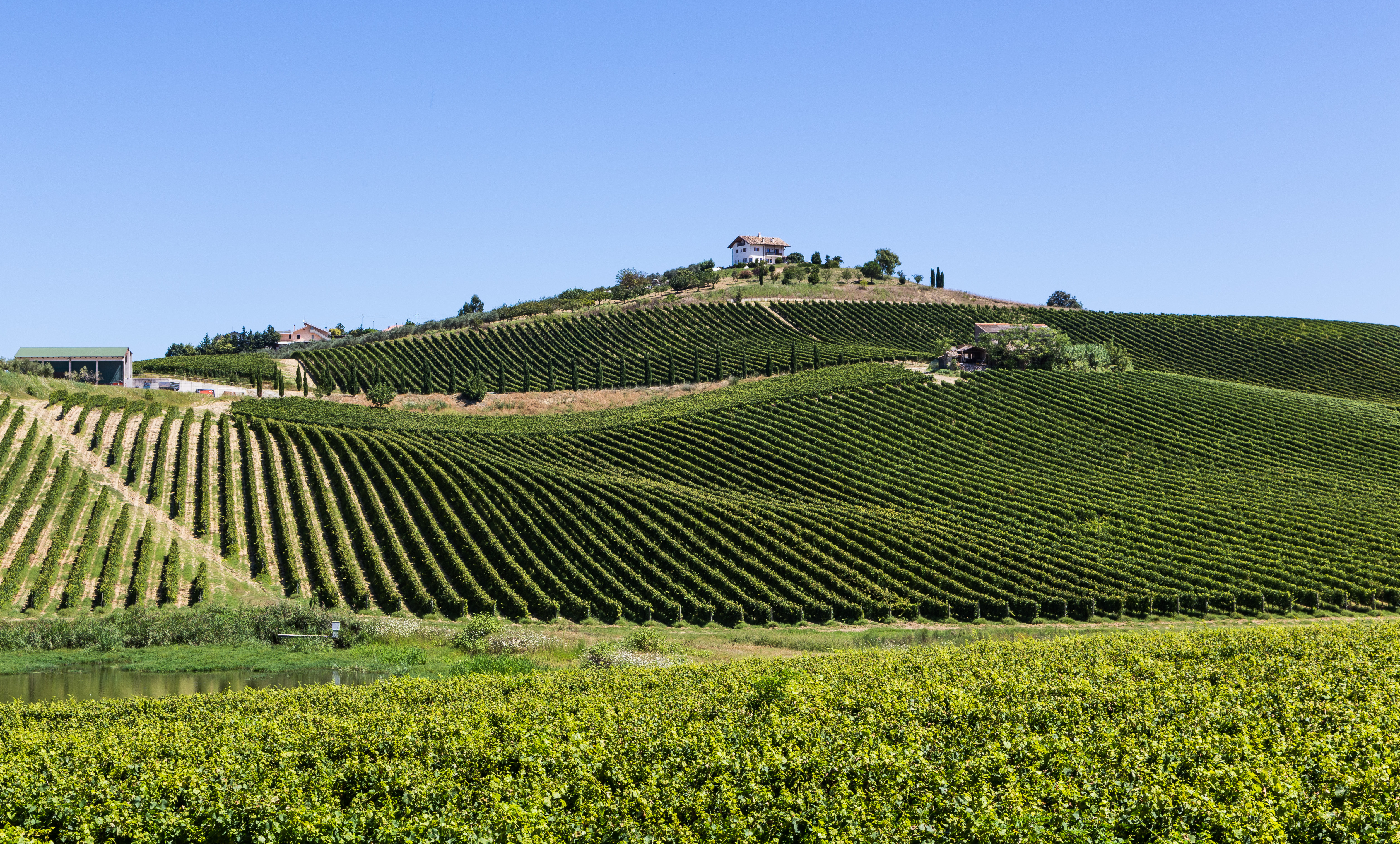The Abruzzo wine region resides due south of Marche along the Adriatic Sea on the east coast of Italy. Home to possibly the most fun grape name to pronounce: Montepulciano. One more time, Mon-te-pul-ciano! Just makes you want to talk with your hands as it rolls off your tongue. Abruzzo is also home to one of the best expressions of Trebbiano (no to be confused with the underwhelming neighboring Trebbiano from Tuscany).
Abruzzo has 8 DOCs (we will only go into greater detail on the two most prevalent DOCs in the US marketplace):
- Controguerra
- Montepulciano d’Abruzzo – laws require a minimum of 85% Montepulciano and up to 15% of the remaining blend to be Sangiovese. In Casauria and Terre die Vestini the wine must be 100% Montepulciano. Wines must be ages a minimum of 5 months. The “Vecchio” labeling is reserved for wines aged a minimum of 2 years in oak barrels. Rosé wine under the same designation, winemaking rules, and blending are labeled as “Cerasuolo”
- Trebbiano d’Abruzzo – must be no less than 85% field blend of Trebbiano d’Abruzzo (possibly Bombino Bianco) and Trebbiano Toscana and not exceeding 15% being comprised of either/or Malvasia Toscano, Cococciola, and Passerina
- Terre Tollesi o Tullum
- Cerasuolo d’Abruzzo
- Abruzzo
- Villamagna
- Ortona
Around 80% of the production in the DOCs is made up of red wine – mainly Montepulciano (not to be confused with Vino Nobile di Montepulciano from Tuscany, which is actually Sangiovese not Montepulciano), the fifth most planted grape in Italy – and although there are some interesting, relatively unknown whites that have begun to take traction with connoisseurs of the more obscure, the workhorse of the whites is Trebbiano d’Abruzzo which can be confusing as field blends can be made of it, Trebbiano Toscano and Bombino Bianco, all labeled as Trebbiano d’Abruzzo. These very occurrences are a perfect example of why we decided to dedicate a few months of our writings to this “Understanding Italy” series.
Tangent: speaking to aspiring Sommeliers over the years, we’ve asked what the toughest part of the process was, and almost everyone we spoke to said, “understanding Italy.”
We digress…
Abruzzo has 1 DOCG: Montepulciano d’Abruzzo Colline Teramane. Harvest, ageing, and alcohol levels are similar to the DOC by a similar name, yet the wine must be no less than 90% Montepulciano and no more than 10% of Sangiovese.
In addition to the DOCs there are eight IGTs in Abruzzo. These producers dabble largely in proprietary blends using a wider range of European grapes due to the reduced restrictions on their winemaking process.
From a geographic standpoint, the mountains surrounding Abruzzo do a good job at keeping western weather patterns at bay, allowing the rains to come in from the east, which drop a decent amount of rain on the region. In some years though this can cause concern as too much rain can ruin the crops. In the majority of vintages, the rain isn’t a huge issue and the region enjoys hot days and cool nights; perfect growing conditions for the grapes to ripen in the day and lock in acidity at night.
Understanding Italy Series:

